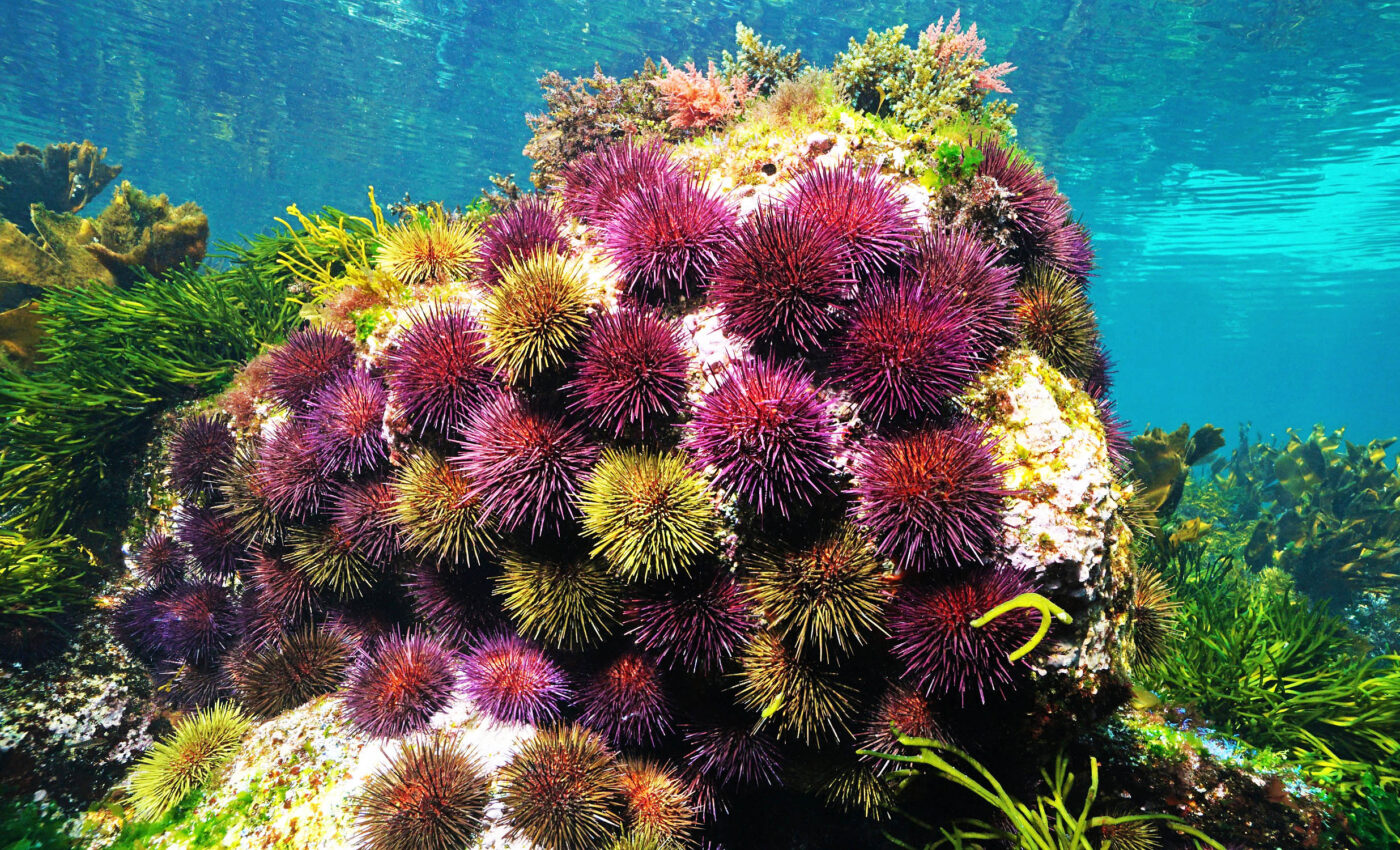
Gray whales struggle as purple sea urchins destroy kelp forests
As humans, we often perceive our lives as separate from the vast, intricate ecosystems that surround us. Yet, a recent study from Oregon State University (OSU) serves as a stark reminder of the interconnectedness of nature, revealing how a seemingly isolated event — a boom in purple sea urchin populations — can have cascading effects reaching as far as the mighty gray whale in kelp forests.
Kelp forest in peril due to sea urchin
Kelp forests are the underwater equivalents of terrestrial rainforests, teeming with life and providing crucial habitats for countless marine species. However, a silent predator has been wreaking havoc on these vital ecosystems: the purple sea urchin.
In the aftermath of the Sea Star Wasting Syndrome pandemic, which decimated sea star populations, the purple sea urchin population exploded.
These spiky invertebrates are voracious kelp consumers, and their unchecked numbers have led to the destruction of vast kelp forests off the Oregon coast.
Overpopulation of purple sea urchins in kelp forests
The consequences of the ecological shift caused by the overpopulation of purple sea urchins extend far beyond the kelp itself. Because of their importance to ecosystems, the loss of kelp forests triggers a cascade of negative effects throughout the food web.
Kelp forests and zooplankton
Zooplankton, which are microscopic organisms, play a crucial role in the marine food web.
These tiny creatures form the base of the marine food chain, serving as a primary food source for many larger marine animals, including fish and whales. Kelp forests provide zooplankton with essential shelter and a steady supply of nutrients.
As purple sea urchins devour kelp forests, the habitat for zooplankton diminishes. The destruction of these forests means that zooplankton lose their primary habitat and the protection it offers from predators.
Moreover, the kelp forests contribute to a stable environment where zooplankton can thrive and reproduce. Without this environment, their populations decline sharply.
Gray whales struggle in kelp forests
Gray whales rely heavily on zooplankton as a significant part of their diet. The decline in zooplankton populations directly affects the gray whales’ ability to find enough food.
As kelp forests vanish and zooplankton numbers drop, gray whales face a severe food shortage. This lack of food leads to several adverse outcomes for the whales:
- Reduced foraging efficiency: Gray whales have to spend more time and energy searching for food, which can deplete their energy reserves.
- Poor health: With insufficient food, gray whales can suffer from malnutrition. This weakens their overall health, making them more susceptible to disease and less capable of reproducing successfully.
- Migration patterns: Food scarcity can force gray whales to alter their migration routes, potentially leading them into less favorable or more dangerous waters.
Broader ecological implications
The decline of kelp forests and the subsequent impact on zooplankton and gray whales exemplify the interconnectedness of marine ecosystems. When one component of the ecosystem is disrupted, the effects ripple through the entire system.
Other species that rely on zooplankton, either directly or indirectly, are also affected. The loss of kelp forests can lead to reduced biodiversity, altered species compositions, and weakened ecosystem resilience.
“This study shows the cascading impacts of a change in the coastal ocean ecosystem in a way that has not been documented before,” said Lisa Hildebrand, the lead author of the study. “These impacts extend indirectly to a top predator, the gray whale, and it affects them in a negative way.”
Loss of the sea otters
The absence of sunflower sea stars, the primary predator of sea urchins, exacerbated the problem in kelp forest. Historically, sea otters also played a role in controlling urchin populations, but they were hunted to extinction in Oregon waters over a century ago.
“In ecology, we think about the important role of redundancy in an ecosystem,” said Leigh Torres, an associate professor at OSU and co-author of the study.
“This is a good example of an ecosystem that lacks redundancy due to the loss of sea otters. The system could not sustain itself without both the sea otters and the sea stars.”
Glimmer of hope
Despite the dire situation, there are signs of recovery. In 2023, researchers observed a decrease in urchin numbers and a resurgence of kelp, zooplankton, and gray whales. This suggests that the ecosystem may be slowly returning to a state of balance.
“We think and we hope this system is recovering and we’ll continue to monitor it through our research,” said Torres. “Oregonians love having gray whales feeding along our coast and they need a healthy habitat to ensure that continues.”
Kelp forest and sea urchin connection
The plight of the gray whale and the kelp forest crisis serves as a cautionary tale about the delicate balance of nature. It highlights the importance of protecting biodiversity and the interconnectedness of species.
“These impacts extend indirectly to a top predator, the gray whale, and it affects them in a negative way,” notes Lisa Hildebrand. It’s a reminder that our actions, or inactions, can have ripple effects far beyond our immediate surroundings.
The future of the gray whale and the kelp forest hangs in the balance. It is a future that depends on our ability to learn from the past, to protect the environment, and to recognize that we are not separate from nature, but an integral part of it.
The study is published in the journal Scientific Reports.
—–
Like what you read? Subscribe to our newsletter for engaging articles, exclusive content, and the latest updates.
Check us out on EarthSnap, a free app brought to you by Eric Ralls and Earth.com.
—–













